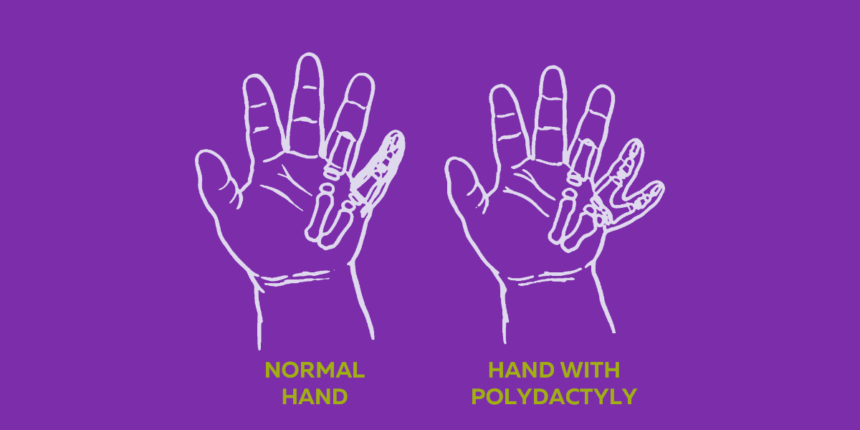Polydactyly refers to extra fingers and toes that the child may have at birth. It is a congenital malformation with a genetic predisposition, with males being affected more than females. Polydactyly is also more commonly seen in African-Americans than Caucasians.
What should I expect if my child has extra digits?
Most children with Polydactly are otherwise healthy and can perform any hand function once surgically treated to remove the extra digit. Occasionally Polydactyly may be associated with other medical conditions or syndromes such as halt-Orman, Fanconi anaemia, imperforate anus/ cleft palate, or tibial defects.
The child’s extra fingers may comprise only skin and soft tissues resembling a different skin tag or involving bone. There is also a possibility that the extra finger is a well-built finger with its joints, ligaments, and tendons.
In case the Polydactly involves the thumb, the extra digit more often has a duplication of bone with skin and other soft tissue structures.
Polydactyl involving the small finger increases the risk of associated genetic abnormalities; therefore, a thorough genetic workup should be preferred to evaluate for associated syndromes. It may present as a well-formed digit or a rudimentary skin tag.
How is Polydactyly treated?
Historically, small extra digits that were present at the sides of the little fingers were tied off and allowed to fall. Still, this procedure is abandoned because of the formation of tiny bumps that lead to pain and stinging sensation. Depending upon the specific digit and the extent of duplication, surgical reconstruction is usually performed.
What are the different types of surgeries for polydactly?
If the child has a rudimentary polydactyly tag or simple polydactyl that merely involves the skin, often as the one that occurs at the sides of the little finger, it is excised as a day case procedure. The child is allowed to go home the same day.
It is essential to keep the wound dry and clean. Avoid soaking the bandage under water for two weeks until the stitches have been removed.
In the case of Polydactyly involving the thumb, a more complex surgical procedure is usually carried out; the aim is to construct a thumb that is 80% of the size of the contralateral thumb and to resect the more petite thumb, which in most instances is the one that is towards the outer side. This procedure involves resection of the bone and reconstruction of the ligaments and tendons. The child may sometimes go home with a pin to support the bone as it heals.
Occasionally, the child may have to wear a cast. The pin or cast may stay until the doctor ensures the bones have adequately healed after doing appropriate X-rays during follow-up.
Will my child require therapy after surgery?
Physiotherapy rehabilitation and occupational therapy may improve the function of the hand and might be required in some exceptional circumstances, mainly if the Polydactyly involves the thumb.
When should I call the doctor after my child’s polydactyly surgery?
- In case of fever without any other apparent cause
- Greenish or yellow discharge from the wound site.
- Lack of appetite, a child feeling lethargic.
- Persistent pain despite being given painkillers.

